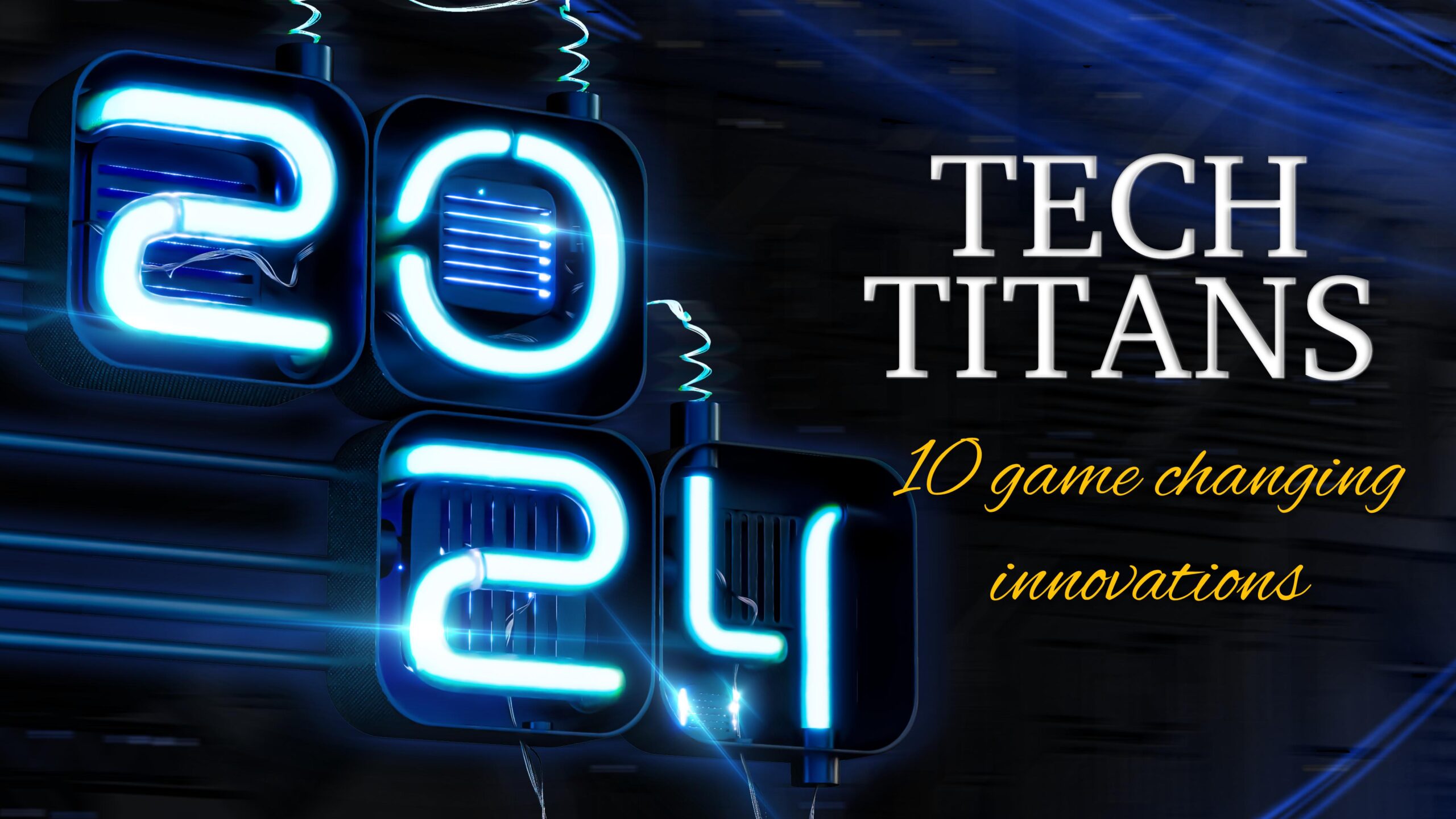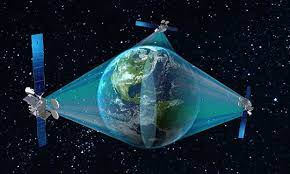In the ever-evolving landscape of technology, certain innovations stand out as game-changers—those that have the potential to significantly alter our lives, industries, and future developments. These breakthrough technologies not only solve existing problems but also open up new possibilities we hadn’t previously imagined. This year, several such advancements are poised to make a lasting impact. As 2024 comes to a close, let’s delve into the top 10 breakthrough technologies of this year, highlighting their significance, current developments, and potential future implications.
Artificial Intelligence (AI) has been a transformative force across various fields, and in 2024, it is revolutionizing scientific discovery. By processing vast datasets at unprecedented speeds and identifying patterns that might elude human researchers, AI is accelerating the pace of breakthroughs in fields such as drug discovery, climate modeling, and materials science. For example, AI algorithms can predict the structures of proteins, a task that is critical for understanding diseases and developing new treatments. The integration of AI in research laboratories not only enhances efficiency but also opens new avenues for innovation that were previously inconceivable.
Quantum computing, long the stuff of science fiction, is now on the cusp of real-world application. Unlike classical computers that use bits, quantum computers use quantum bits or qubits, which can exist in multiple states simultaneously thanks to the principles of superposition and entanglement. This allows quantum computers to solve complex problems much faster than their classical counterparts. In 2024, significant progress has been made in making quantum computers more stable and scalable. Industries such as cryptography, material science, and pharmaceuticals are set to benefit immensely from quantum computing, as it can perform calculations that are otherwise impossible or would take centuries with current technology.
CRISPR technology, which allows for precise editing of the genetic code, continues to advance rapidly. In 2024, CRISPR is being used not only for basic research but also for developing treatments for genetic disorders, cancers, and other diseases. Recent breakthroughs include the ability to edit genes with higher accuracy and fewer off-target effects. This technology holds promise for curing inherited diseases such as cystic fibrosis and sickle cell anemia by correcting the underlying genetic mutations. Additionally, CRISPR is being explored for its potential to combat infectious diseases by engineering resistant organisms. As ethical and regulatory frameworks evolve, CRISPR’s applications are expected to expand, paving the way for personalized medicine and novel therapies.
As the world grapples with climate change, advancements in renewable energy technologies are more crucial than ever. In 2024, several innovative solutions are emerging that promise to make renewable energy more efficient and accessible. Innovations in solar power, such as perovskite solar cells, offer higher efficiency and lower production costs compared to traditional silicon-based cells. Wind energy is also seeing improvements with the development of floating wind turbines that can be deployed in deeper waters where winds are stronger. Additionally, advancements in energy storage technologies, such as solid-state batteries, are addressing the intermittency issues of renewable energy sources, ensuring a more stable and reliable power supply.
Battery technology is a cornerstone of our electrified world, impacting everything from smartphones to electric vehicles (EVs). In 2024, advanced battery technologies are pushing the boundaries of what is possible, with longer lifespans, faster charging times, and higher energy densities. Solid-state batteries, which use a solid electrolyte instead of a liquid one, are particularly promising. They offer higher energy densities, are less prone to catching fire, and have a longer lifespan than traditional lithium-ion batteries. These advancements are not only critical for consumer electronics but also for the widespread adoption of EVs and the integration of renewable energy sources into the grid.
While 5G is still rolling out globally, research and development in 6G technology are already underway, promising to bring unprecedented connectivity and performance. Expected to be commercially available by the early 2030s, 6G will offer speeds up to 100 times faster than 5G, enabling ultra-reliable and low-latency communications. This will pave the way for advancements in virtual and augmented reality, autonomous vehicles, and the Internet of Things (IoT). With the potential to support data rates of up to 1 terabit per second, 6G will revolutionize industries by enabling seamless real-time interactions and massive device connectivity, driving the next wave of digital transformation.
Reconfigurable Intelligent Surfaces (RIS) represent a novel technology aimed at optimizing wireless communications. RIS consists of surfaces embedded with numerous small antennas or reflective elements that can dynamically alter electromagnetic waves to enhance signal quality and coverage. In 2024, RIS is making strides in improving wireless networks by reducing signal interference and increasing data transmission rates. This technology can be integrated into buildings, vehicles, and even clothing, providing more robust and efficient connectivity in challenging environments. By dynamically shaping the propagation of signals, RIS can significantly boost the performance of wireless networks, making them more reliable and efficient.
High Altitude Platform Stations (HAPS) are unmanned aerial vehicles or balloons that operate in the stratosphere, providing communication and observation services over large areas. In 2024, HAPS are gaining traction as a means to extend internet access to remote and underserved regions, as well as for disaster response and environmental monitoring. These platforms can stay aloft for extended periods, covering areas that are difficult to reach with traditional infrastructure. By providing high-speed internet connectivity and real-time data collection from the skies, HAPS have the potential to bridge the digital divide and enhance our ability to monitor and respond to environmental changes.
As the world seeks solutions to mitigate climate change, carbon-capturing microbes are emerging as a promising technology. These engineered microbes can convert atmospheric carbon dioxide into valuable products such as biofuels, chemicals, and building materials. In 2024, advancements in synthetic biology and genetic engineering have enabled the development of highly efficient carbon-capturing microbes. These organisms can be deployed in various settings, from industrial facilities to agricultural lands, helping to reduce greenhouse gas emissions and sequester carbon. By harnessing the power of nature, carbon-capturing microbes offer a sustainable approach to addressing one of the most pressing challenges of our time.
Elastocaloric materials are an emerging class of materials that undergo temperature changes when subjected to mechanical stress. This property makes them highly efficient for use in heating and cooling applications. In 2024, elastocaloric technology is being explored for its potential to replace traditional refrigeration and air conditioning systems, which are major contributors to greenhouse gas emissions. Elastocaloric materials can provide cooling without the use of harmful refrigerants, making them an environmentally friendly alternative. The development of practical elastocaloric devices could lead to significant energy savings and a reduction in the environmental impact of cooling technologies.
The top 10 breakthrough innovations of 2024 demonstrate the incredible pace of technology and its potential to address some of the world’s most pressing challenges. From AI-powered scientific discoveries to advanced battery technologies and quantum computing, these advancements are set to shape the future in profound ways. As we continue to push the boundaries of what is possible, it is essential to consider the ethical, social, and environmental implications of these technologies. By fostering responsible innovation, we can ensure that these breakthroughs benefit all of humanity and pave the way for a brighter future.






 2. Quantum Computing
2. Quantum Computing 8. High Altitude Platform Stations (HAPS)
8. High Altitude Platform Stations (HAPS)
No Comment! Be the first one.